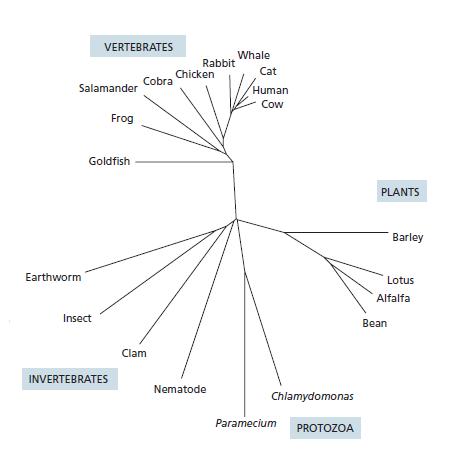Hemoglobin-like proteins were discovered in legumes, where they function in root nodules to lower the oxygen concentration,
Question:
Hemoglobin-like proteins were discovered in legumes, where they function in root nodules to lower the oxygen concentration, allowing the resident bacteria to fix nitrogen. These plant “hemoglobins” impart a characteristic pink color to the root nodules. The discovery of hemoglobin in plants was initially surprising because scientists regarded hemoglobin as a distinctive feature of animal blood. It was hypothesized that the plant hemoglobin gene was acquired by horizontal transfer from an animal. Many more hemoglobin-like genes have now been discovered and sequenced from a variety of organisms, and a phylogenetic tree of hemoglobins is shown in Figure Q9–17.
A. Does the evidence in the tree support or refute the hypothesis that the plant hemoglobins arose by horizontal gene transfer from animals?
B. Supposing that the plant hemoglobin genes were originally derived by horizontal transfer (from a parasitic nematode, for example), what would you expect the phylogenetic tree to look like?
Step by Step Answer:

Essential Cell Biology
ISBN: 9780393680362
5th Edition
Authors: Bruce Alberts, Karen Hopkin, Alexander Johnson, David Morgan, Martin Raff, Keith Roberts, Peter Walter





